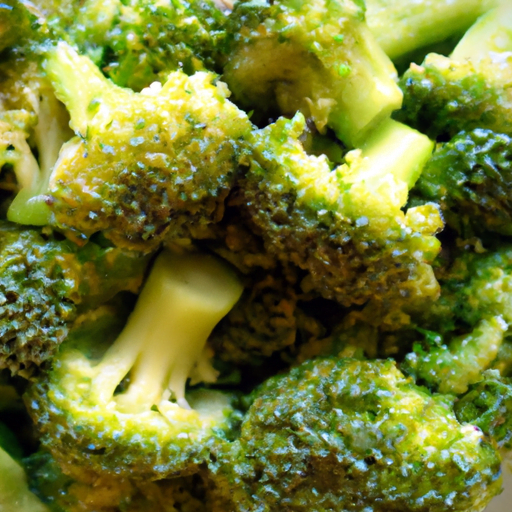Do you ever think about how you would handle certain things if you didn’t have access to modern conveniences? Like, what if you were living off the grid and didn’t have a refrigerator to keep your food fresh? It’s definitely a unique challenge, but not an impossible one. One question that might come to mind is how to store broccoli without refrigeration. Well, let me tell you, it’s totally doable and I’ll be sharing some tips and tricks with you in this article.
So, let’s dive into the world of off-grid food preservation. When it comes to storing broccoli without refrigeration, there are a few methods you can try. First off, you can blanch the broccoli, which means rapidly boiling it for a short period of time and then plunging it into ice-cold water. This helps to stop the enzymes from breaking down the broccoli and keeps it fresh. Another option is to use a root cellar, if you have one. This underground storage space is naturally cool and can keep your broccoli crisp for an extended period of time.
Now, I know what you’re probably thinking – what if I don’t have access to a root cellar? Well, fear not! There is another method you can try. You can actually dehydrate broccoli. Yes, you heard me right. By removing the moisture from the broccoli, you can preserve it for months without refrigeration. You can do this by cutting the broccoli into small florets, blanching them briefly, and then spreading them out on a dehydrator tray. Once they’re completely dry, you can store them in an airtight container and they’ll be good to go whenever you need them.
So, as you can see, there are a few different ways to store broccoli without refrigeration. Whether you choose to blanch it, use a root cellar, or dehydrate it, you’ll be able to enjoy fresh-tasting broccoli even without a fridge. Make sure to check out the rest of the article for more detailed instructions and tips on preserving different types of food without refrigeration. Happy off-grid living!

Preserving Broccoli Without Refrigeration
Preserving food is a crucial skill, especially for those living off the grid or in situations where refrigeration is not readily available. Broccoli, a nutritious and versatile vegetable, can be preserved using various methods that allow it to be stored at room temperature. In this article, we will explore different techniques for preserving broccoli without relying on refrigeration.
Introduction to Preserving Broccoli Without Refrigeration
Preserving food is an essential practice in order to avoid wastage and ensure a steady supply of nutritious meals, regardless of the availability of modern conveniences like refrigeration. When it comes to storing broccoli without refrigeration, there are several challenges to consider. Broccoli is a perishable vegetable that can spoil quickly if not properly preserved. However, with the right techniques, it is possible to extend its shelf life and enjoy its benefits long after harvest.
Preserving broccoli without refrigeration offers several benefits. Firstly, it allows you to enjoy the nutritional value and flavor of fresh broccoli even when access to refrigeration is limited. Additionally, it can help reduce food waste and save money, as preserved broccoli can be stored for longer periods without spoilage.
Methods for Preserving Broccoli at Room Temperature
There are several techniques that can be used to effectively preserve broccoli at room temperature, ensuring its longevity and quality. These methods include blanching and freezing broccoli, drying broccoli, fermenting broccoli, pickling broccoli, creating broccoli powder, canning broccoli, and vacuum sealing broccoli.
Blanching and Freezing Broccoli
One popular method for preserving broccoli is through blanching and freezing. Blanching involves briefly boiling the broccoli in salted water or steam, followed by rapid cooling in ice water to halt the cooking process. This helps to retain the broccoli’s color, texture, and nutritional value. Once blanched, the broccoli can be frozen and stored for an extended period of time.
To properly freeze blanched broccoli, it should be drained well to remove excess moisture before packaging. The broccoli can be stored in airtight containers or freezer bags, ensuring to remove as much air as possible to prevent freezer burn. Properly packaged frozen broccoli can be stored for up to one year.
Drying Broccoli
Drying is another effective method for preserving broccoli without refrigeration. Air drying and using a dehydrator are two common techniques for drying broccoli. Air drying involves placing the broccoli in a well-ventilated area with good air circulation, such as a dry and warm room or a sunny spot outdoors. The broccoli should be spread out in a single layer and periodically turned to ensure even drying. This method may take several days or even weeks, depending on the climate and moisture levels.
Using a dehydrator is a faster and more controlled method for drying broccoli. The dehydrator removes moisture from the broccoli at a consistent temperature, resulting in quicker drying times and preserving the broccoli’s flavor and nutritional content. Once dry, the broccoli can be stored in airtight containers or vacuum-sealed bags. Properly dried broccoli can be stored at room temperature for several months or even longer.
Fermenting Broccoli
Fermenting broccoli not only preserves it but also enhances its taste and nutritional value. Fermentation is a natural process that involves the growth of beneficial bacteria, which produce lactic acid and other compounds that act as natural preservatives. Fermenting broccoli also increases its digestibility and probiotic content.
To ferment broccoli, it is important to create a suitable fermentation environment. This involves submerging the broccoli in a brine solution made from water and salt, and ensuring that the broccoli is fully submerged to prevent mold growth. The fermentation process can take anywhere from a few days to several weeks, depending on the desired level of fermentation. Once fermented, the broccoli can be stored in the fridge or at room temperature, depending on personal preference.
Pickling Broccoli
Pickling is another popular method for preserving broccoli without refrigeration. Pickled broccoli maintains its crispiness and flavor, making it a versatile ingredient in various dishes. Basic pickling techniques involve submerging the broccoli in a vinegar-based brine, which can be flavored with spices, herbs, or sweeteners to create different flavor profiles.
To pickle broccoli, it is important to select fresh and high-quality broccoli to ensure optimal results. The broccoli should be blanched briefly before being placed in sterilized jars and covered with the pickling brine. The pickled broccoli should be stored in a cool, dark place for several weeks to allow the flavors to develop. Once opened, the pickled broccoli can be stored in the fridge.
Broccoli Powder
Creating broccoli powder is a unique way to preserve and utilize broccoli without refrigeration. Broccoli powder can be easily made at home by drying the broccoli thoroughly and grinding it into a fine powder. This powder can then be stored in airtight containers and used as a flavor enhancer or nutritional supplement in various recipes.
Broccoli powder is a convenient way to incorporate the nutritional benefits of broccoli into your diet, especially when fresh broccoli is not readily available. It can be added to smoothies, soups, sauces, or sprinkled over roasted vegetables to add an extra boost of vitamins and minerals.
Canning Broccoli
Canning is a popular method for preserving a wide range of vegetables, including broccoli. There are two main methods for canning broccoli: pressure canning and water bath canning.
Pressure canning involves sealing the broccoli in sterilized jars and processing them at high temperatures and pressure to ensure the elimination of harmful bacteria. This method is suitable for low-acid vegetables like broccoli, as it ensures the safety and longevity of the preserved broccoli.
Water bath canning, on the other hand, involves submerging the closed jars of broccoli in boiling water for a designated period of time. This method is suitable for pickled or acidic broccoli preparations.
Conclusion
Preserving broccoli without refrigeration is not only possible but also offers a range of benefits. From blanching and freezing to drying, fermenting, pickling, creating powder, canning, and vacuum sealing, there are various techniques to choose from based on personal preferences and available resources. By experimenting with different preservation methods, you can ensure a steady supply of fresh-tasting and nutritious broccoli all year round. So go ahead and explore these methods to enjoy the benefits of preserved broccoli without relying on refrigeration. Happy preserving!





